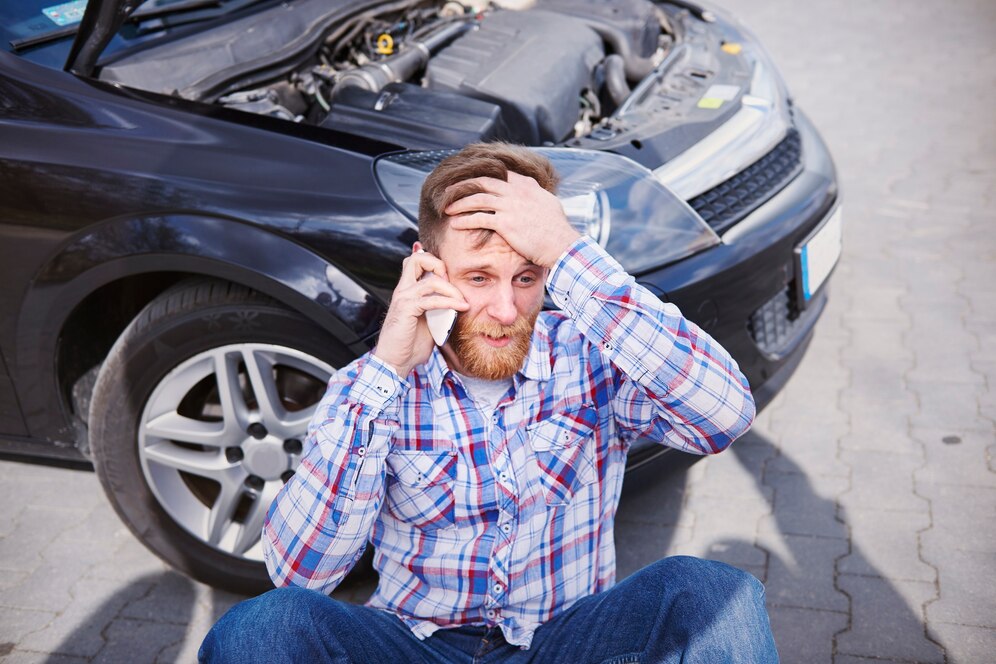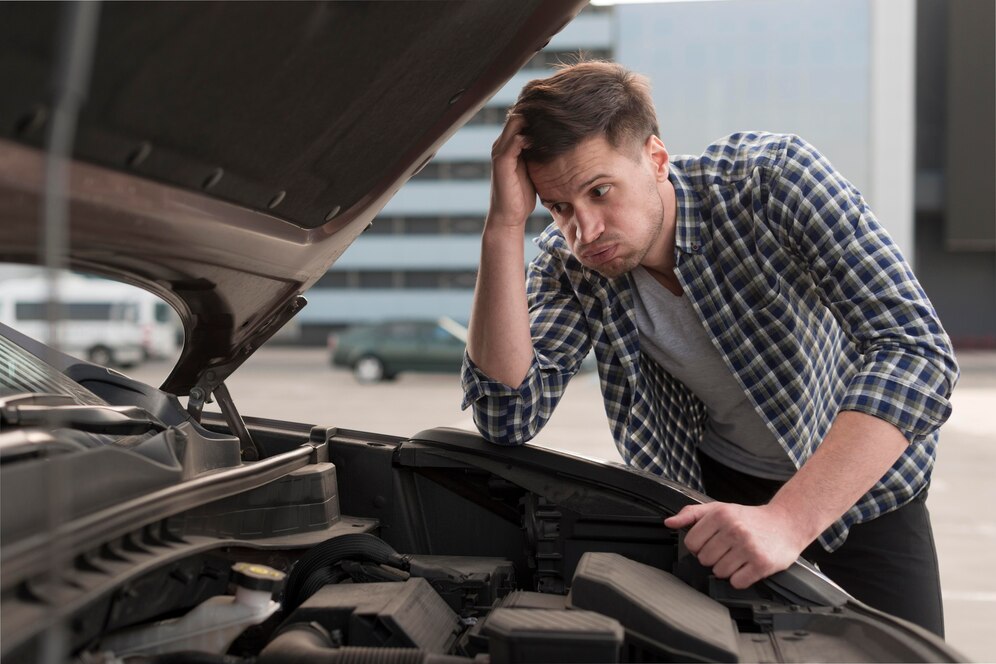introduction
Owning a car brings freedom and convenience, but it also comes with responsibilities — especially when mechanical issues arise. Whether you’re a daily commuter or a weekend driver, knowing the most common car problems and how to fix them can save you time, money, and stress. In this article, we’ll cover the top 10 most common car problems, their causes, symptoms, and solutions you can try — either on your own or with professional help.

Dead or Weak Battery
Symptoms:
Car won’t start or cranks slowly
Dashboard lights flicker or go dim
Clicking sound when turning the key
Causes:
Old battery (more than 3–5 years)
Leaving lights on overnight
Faulty alternator
Corroded terminals
Fix:
Jumpstart the car using jumper cables
Clean battery terminals
If battery is old or damaged, replace it
Have the alternator checked if the issue persists
Engine Overheating
Symptoms:
Temperature gauge rising
Steam from the hood
Coolant warning light
Causes:
Low coolant level
Faulty thermostat or radiator fan
Coolant leak
Fix:
Check and refill coolant (only when engine is cool)
Inspect hoses for leaks
Replace faulty thermostat or radiator parts
Brake Issues
Symptoms:
Squealing or grinding noises
Brake pedal feels soft or spongy
Car pulls to one side while braking
Causes:
Worn-out brake pads
Air in the brake lines
Leaking brake fluid
Fix:
Replace brake pads
Bleed the brakes to remove air
Repair or replace damaged brake lines or master cylinder
Engine Misfiring or Rough Idling
Symptoms:
Shaky engine or vibrations
Loss of power
Check engine light is on
Causes:
Worn-out spark plugs
Dirty fuel injectors
Faulty ignition coil
Fix:
Replace spark plugs and ignition wires
Clean or replace fuel injectors
Use a fuel system cleaner additive
Flat or Worn-Out Tires
Symptoms:
Thumping noise while driving
Vehicle pulling to one side
Visible tire wear or cracks
Causes:
Low air pressure
Driving on rough terrain or nails
Misalignment or unbalanced tires
Fix:
Keep tires properly inflated
Use a tire repair kit or replace tire
Rotate and balance tires regularly
Get wheel alignment done if needed
Transmission Problems
Symptoms:
Delayed or rough shifting
Fluid leaks under the car
Burning smell
Causes:
Low or dirty transmission fluid
Worn-out gears
Faulty transmission sensor
Fix:
Check and top-up transmission fluid
Flush and replace fluid if it’s dirty
Visit a mechanic if the issue continues
Check Engine Light On
Symptoms:
Yellow or red engine light on dashboard
Causes:
Loose gas cap
Faulty oxygen sensor
Bad catalytic converter
Fix:
Tighten or replace the gas cap
Use an OBD2 scanner to diagnose specific error codes
Replace faulty parts as per diagnosis
Steering Wheel Vibration
Symptoms:
Steering shakes while driving or braking
Uneven tire wear
Causes:
Unbalanced tires
Warped brake rotors
Suspension issues
Fix:
Balance the tires
Replace brake rotors if needed
Check suspension and wheel bearings
Car Pulling to One Side
Symptoms:
Car veers left or right when driving straight
Causes:
Improper wheel alignment
Uneven tire pressure
Stuck brake caliper
Fix:
Inflate tires to recommended pressure
Get a professional wheel alignment
Inspect and repair brake system
Exhaust Smoke
Symptoms:
Blue, black, or white smoke from tailpipe
Causes:
Blue smoke: burning oil
Black smoke: fuel mixture too rich
White smoke: coolant leak into engine
Fix:
Blue smoke: Check for oil leaks or worn engine seals
Black smoke: Replace air filter or fuel injectors
White smoke: Inspect head gasket or radiator

Conclusion:
Being aware of these common car problems can help you take action before they escalate into costly repairs. While many of these issues can be fixed at home with basic tools and knowledge, others may require the expertise of a qualified mechanic. Regular maintenance, timely oil changes, and paying attention to warning signs are the best ways to keep your car in great shape.Always consult your vehicle’s owner manual and don’t hesitate to seek professional help when in doubt.

